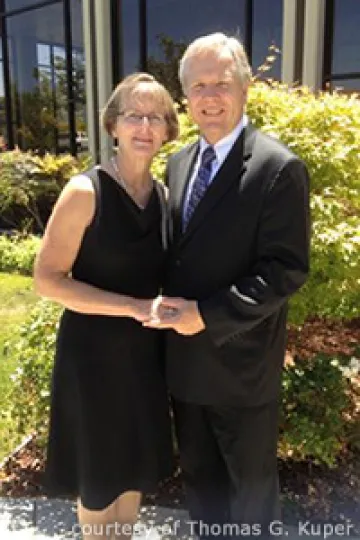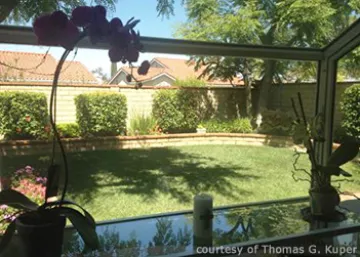Etendue: Thomas G. Kuper
Welcome to Etendue, featuring interesting and accomplished individuals known for their leadership and contributions both with their careers and the College of Optical Sciences, in their own words. (For a similar view on the college’s best and brightest – our students – please check out Another Wavelength among our Students in the Spotlight.)
This week, we hear from Thomas G. Kuper, Ph.D. 1983.

Where are you from?
I was born in Lynwood, California, and I grew up in the Orange County cities of La Mirada and La Habra. I received a B.A. degree in physics from Cal State University, Fullerton, then received my M.S. and Ph.D. degrees in optical sciences from the University of Arizona.
Who or what influenced your interest in optics?
I first became interested in optics after taking lower-division courses in classical optics and holography as an undergraduate. In my senior year at CSUF, I went to a seminar that predicted the field of optics would expand rapidly, providing many jobs and interesting problems to solve. Since I also enjoyed quantum mechanics, I decided that quantum optics would be a good field for me, and I applied to the Optical Sciences Center for graduate school.
Describe your career.
I met my wife, Mary, at the beginning of my second year in graduate school, so I decided to stay at the U of A when my adviser at the time, Marlan Scully, left to start a new department in New Mexico. I then started working on diffraction theory for Roland Shack. Because of Roland’s influence I became much more interested in doing analysis related to geometrical optics. As a result, I decided to work at the Lockheed Palo Alto Research Center when I left UA, and after about three and a half years I went to work for Optical Research Associates (which recently became the Optical Solutions Group at Synopsys) where I spent the remainder of my career. The main emphasis of my work was developing optimization and design algorithms for the CODE V lens design program.

Describe your current job.
I retired in September 2014, but I am probably busier now than I have ever been. I have always had a passion for playing golf, but I could only play a few times a year when I was working and raising my children. Now I play several times a week, and I have lowered my handicap from an 18 to a 9. Mary and I babysit our grandchildren regularly, and we enjoy traveling (especially on cruise ships). We also both enjoy gardening, and I dabble in woodworking and programming. In general, we are both excited and happy with this new phase in our lives.
Share your single best OSC experience.
Easily the best aspect of studying at the Optical Sciences Center was the sense of camaraderie shared with the other students and the faculty. The friendships I made at the U of A have lasted a lifetime. Many of my friends from school later became colleagues of mine at work, contributing greatly to my professional development. More importantly, though, they have shared with me their positive outlook on life and have been there to offer encouragement and support when I needed it most.

Why is staying involved with OSC important to you? How are you involved?
Staying involved with OSC for me means first and foremost staying in touch with the people I know there. When possible I hope I can help them in the same ways they have helped me over the years. I also want to make sure new students continue to enjoy the unique environment at OSC that I enjoyed. I have worked with recent graduates of OSC, so I know this environment is alive and well. Since my youngest son will be attending OSC in the fall, I have even more incentive to preserve this environment by providing financial support and visiting the campus. [Editor's note: Tom and his wife, Mary, were early donors to the Roland V. Shack Graduate Student Endowed Scholarship in Optical Sciences.]
Name one neat fact about you.
I have five children, and I pride myself on the fact that though I always encouraged them to do their best, I did not try to dictate their career paths. Nonetheless, I am proud that four of them chose physics for their undergraduate major, and one chose mathematics.
Photos from top: Kuper with wife, Mary; the view from his kitchen window, where he sits to read the mail and paper
